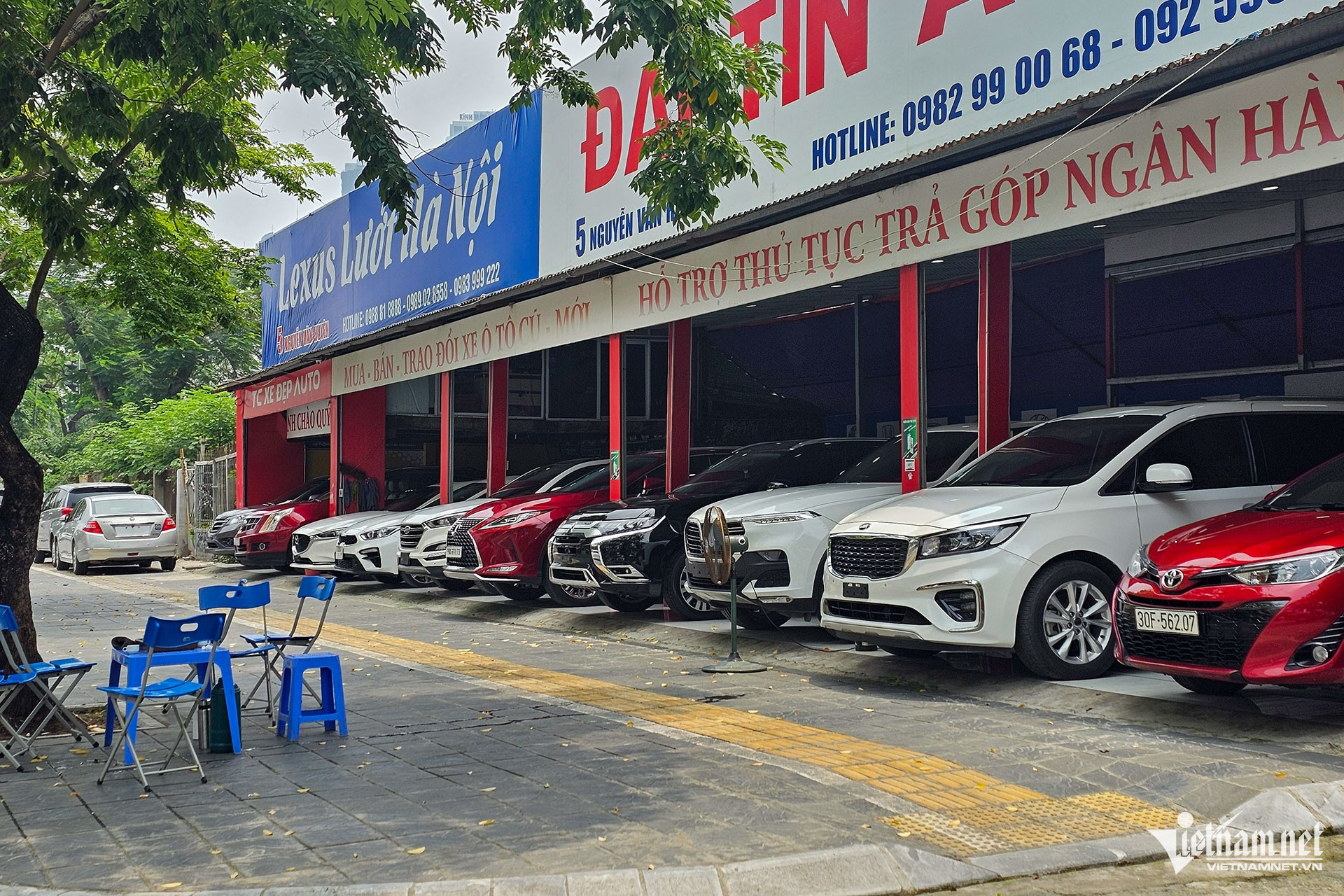
The used-car market is experiencing a rarely seen quiet period. Since the 2025 Lunar New Year, the market has seen nearly no transactions at showrooms in Hanoi and nearby provinces. Cars are plentiful, but buyers remain silent.
“Most brand new cars, used for just 1-2 years and in good condition, are still unsold,” said The Dat, a sales consultant at a car showroom in Hanoi.
“New cars, especially 2023-2024 models, keep dropping in price. This narrows the gap between brand new and barely used cars, making buyers less interested in used ones,” he explained.
“As new car prices plummet, used cars become harder to sell. Customers are increasingly cautious, opting for new cars for greater peace of mind, especially with new car prices at historic lows,” Dat added.
VietNamNet reporters observed a deserted scene at used car showrooms in Hanoi areas like Nguyen Van Huyen, My Dinh, Le Van Luong, and Nguyen Van Cu, with few customers coming or going. The common situation is high inventory but virtually no transactions.
A representative of an online used car trading platform said that both the number of sales listings and buyer demand in the first months of 2025 dropped by about 20 percent, indicating real market struggles. Even “lightly used” models, previously in high demand, are now stuck in a frozen market.
After a long time of "holding their breath" waiting for the market to recover, some used car dealers have agreed to sell to "stop losses", even selling below cost price to stimulate demand. Some market segments have begun warming up again, especially used car models under VND500 million, suitable to the majority of ordinary buyers.
While showrooms are starting to compromise, sellers remain unprepared for the market’s harsh reality.
Doan Anh Dung, a representative of C3 Auto showroom (Bac Tu Liem, Hanoi), said that price drops for new cars have caused used cars to depreciate rapidly.
“A car used for 2-3 years can lose 25-30 percent of its original value. Yet, many owners still hope for high resale prices, refusing to accept losses. This hesitation stalls sales, freezing the market,” he said.
“Buyers of new cars enjoy significant discounts, while used car sellers resist matching price cuts. This disconnect between buyers and sellers creates a major bottleneck, halting the used car market’s flow,” Dung added.
According to Dung, three main reasons contribute to this situation. First, an unstable economy drives people to invest in gold and real estate rather than cars, which are depreciating assets. Second, new cars are heavily discounted with promotions. Third, post-Lunar New Year, used-car inventories remain high, but many dealers resist price cuts.
Dung cited the Hyundai Tucson standard model as example. The model cost VND930-950 million in 2022, but is just VND800 million now, which means a VND150 million drop. Meanwhile, a 2022 used Tucson is priced at about VND650 million, losing nearly VND300 million in value in just three years. This steep depreciation shocks customers.
However, in May and June, under pressure from high inventory and low demand, many used car showrooms began slashing prices or accepting losses to stimulate sales. Despite this, transactions remain challenging, Dung noted.
Some used car models retain appeal
Despite the market’s gloom, certain used car models remain in demand. For instance, 2022-2023 Hyundai Santa Fe diesel models hold value well, as diesel versions are no longer produced.
Similarly, used Mitsubishi Xpanders remain top choices for family and service vehicles due to their practicality and proven durability.
Notably, pickup trucks are the best at retaining value in the used car market. Due to high depreciation in the first three years, used pickups aged 3-5 years maintain stable in price. Since most pickup buyers use them for business, demand remains steady despite market fluctuations, Dung noted.
Price remains key factor
Experts say the used car market can only become busy again if buyers and sellers reach a consensus on pricing. Sellers must accept that used cars lose significant value, while buyers will only commit if the price gap between used and new cars is reasonable.
However, this is challenging. Despite high used-car inventories, the real supply is not plentiful, especially high-quality models with established reputations are scarce. Meanwhile, showrooms have to struggle to manage cash flow, making deeper price cuts difficult.
With no common ground between buyers’ interests and sellers’ expectations, the used-car market may remain dormant, possibly until the end of the year, according to observers.
Hoang Hiep